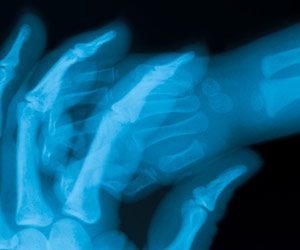Broken Bones During Birth in Chicago
Bone Fractures During Birth
 The birth of a baby is, in itself, a traumatic event: The baby must travel in exceptionally close quarters through the birth canal. So much can go wrong even under normal circumstances. But certain conditions make a birth more likely to be problematic, and the more complicated the birth, the more likely that trauma or injury will occur.
The birth of a baby is, in itself, a traumatic event: The baby must travel in exceptionally close quarters through the birth canal. So much can go wrong even under normal circumstances. But certain conditions make a birth more likely to be problematic, and the more complicated the birth, the more likely that trauma or injury will occur.
Medical Malpractice Claims for Broken Bones
Newborn babies, by their very nature, are fragile beings. So it should come as no surprise that a baby is more susceptible to broken bones during the birthing process than at any other time during his or her life. It is, therefore, vitally importance that doctors, nurses, and hospital staff exercise great caution during delivery to avoid injury. When such medical personnel fail to take proper care, injuries can occur.
The obstetrician and nursing staff must remain vigilant during the birthing process, especially when the mother is small, the baby is large, the labor is long, or the birth is premature. Although not always a solution, a Cesarean section (C-section) is often the right choice to alleviate such potential problems during birth. But even when these issues are not present, the doctor and hospital staff must be prepared for any eventuality.
In essence: Except in rare circumstances when a baby is born with weakened or malformed bone structures, or with a genetic predisposition to broken bones, it is usually the fault of the doctor, nurse, or midwife when an otherwise healthy baby is born with broken bones.
Risk Factors Which Increase Chances for Doctor Error
Even before delivery, the obstetrician must anticipate what could go wrong. This is part of his or her medical and legal responsibility to the mother. When a doctor fails to meet the "standard of care" and an injury results, this is called medical malpractice. The doctor should always watch for:
- A premature birth
- Extended labor
- A smaller-than-normal birth canal
- A larger-than-normal baby
- Cephalopelvic disproportion (baby’s head is too large to fit through mother’s pelvis)
In addition to these conditions, the positioning of the baby at birth often has a significant impact on whether injury or trauma may occur. The safest positions for the baby at birth normally are:
- Neck bent forward
- Rearward facing
- Body and face angled to left or right
- Folded arms across chest
- Cephalic or vertex presentation (head first)
When a baby is positioned abnormally, the danger that something may go wrong, and the potential for injury, increases greatly. Such abnormal presentations include:
- Breech Presentation
- Complete Breech: Sitting position with knees and hips flexed
- Double or Single Footling presentation: Both legs or one leg are extended and present before the buttocks
- Frank Breech: Knees extended with hips flexed
- Brow or face presentation
- Occiput posterior presentation
- Transverse lie
- Shoulder dystocia
Common Broken Bone Injuries in Newborns
Bones are not typically broken during delivery, but in those circumstances where injuries do occur, the most common types of bone breaks include:
- Clavicle Fracture: The clavicle is a long bone that is situated in between the shoulder blade (scapula) and the ribcage (sternum). It is commonly referred to as the collarbone and it lies just above a number of important blood vessels and nerves, yet it is rare for these vital structures to be damaged if the collarbone is broken. Typically, a clavicle fracture will occur in the middle of the bone.Commons symptoms of a collarbone break include crying or general fussiness associated with movement of the arm because of associated pain. It may be apparent that the infant does not or cannot move the particular arm to the same degree that he or she moves the uninjured arm. Depending upon the extent of damage to the nerves, the newborn baby may not be able to move the arm at all, with the arm limply hanging to the side as a result.If the break is quickly diagnosed, the doctor can immobilize the arm and it may heal in 7 to 10 days. In other circumstances, depending upon the injury, it may take much longer or require surgical intervention. If a collarbone break is suspected, the surgeon will likely confirm this through the use of an x-ray or ultrasound. Healing of the bone may cause the development of a lump after a few weeks at the fracture site as well.Although most bone breaks of this type heal quickly and have limited complications, the most significant potential injury involves damage to the brachial plexus, which is a collection of nerves that lay at the base of the arm. These nerves send signals from the spine to the hands, arms, and shoulders. Approximately one in ten of infants who suffer a collarbone break experience damage to the brachial plexus as well. Serious injuries of this type are typically categorized as either:
- Klumpke's palsy (Dejerine-Klumpke palsy): lower brachial plexus paralysis
- Erb's palsy (Erb-Duchenne palsy): upper brachial plexus paralysis
When injuries of this sort occur, parents are advised to contact a birth injury medical malpractice attorney so that medical records can be carefully examined.
- Leg or Arm Bone Fracture: If an arm or leg breaks during delivery, it is sometimes an audible event that is obvious to both doctor and patient. Other times, the presence of swelling, an abnormal appearance, or a lack of normal movement will suggest that injury has occurred. Diagnostic testing should then be used to confirm the existence of the break. For the vast majority of infant bone breaks, prompt treatment is key and when handled properly, long-term injury can usually be avoided.
When a doctor uses bad judgment or excessive force during delivery of a newborn child, injuries can occur. The bones of babies are not as hard as those in adults and it does not take that much force to create a serious and potentially lifelong injury. Virtually any part of the baby is susceptible to such an injury, and although the clavicle, arm, and leg are the most common, bone injuries may also occur to the:
- Hip
- Skull
- Wrist
- Ankle
- Foot
- Back/Spine
Speak to Our Chicago Broken Bone Birth Injury Lawyers
For over 25 years, our Chicago birth injury attorneys have handled baby negligence cases ranging from the most minor to the most severe. Millions have been collected for our clients and their families to help compensate for the pain, suffering, and future bills that always seem to accompany cases of this sort. Call us anytime to discuss your situation free of charge. In the event that you would like our further help, or would like to file a malpractice lawsuit, there is never a fee charged unless we are successful on your behalf. Call 24 hours a day at (312) 243-9922 to discuss your options today.

